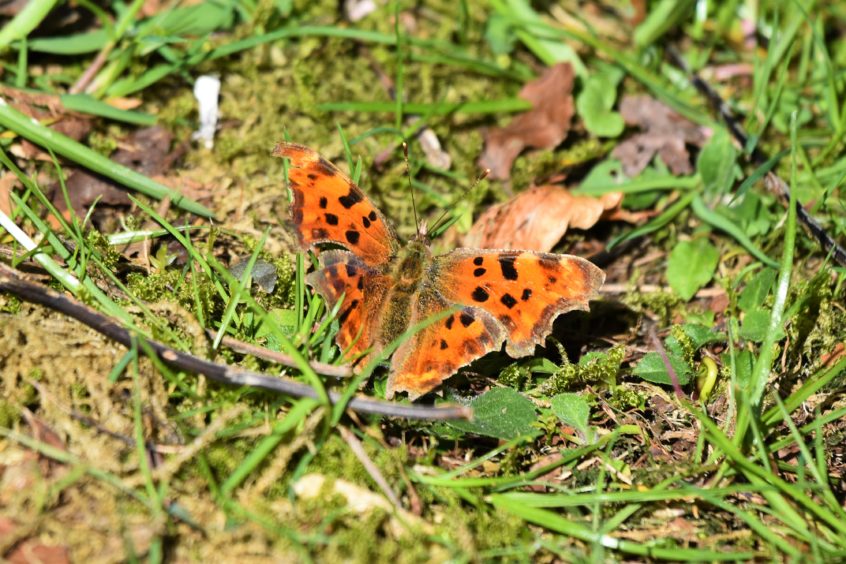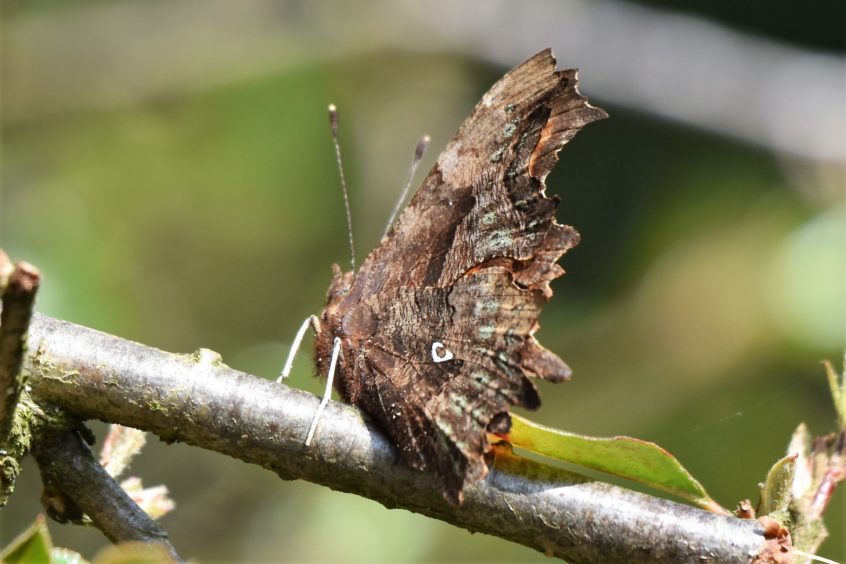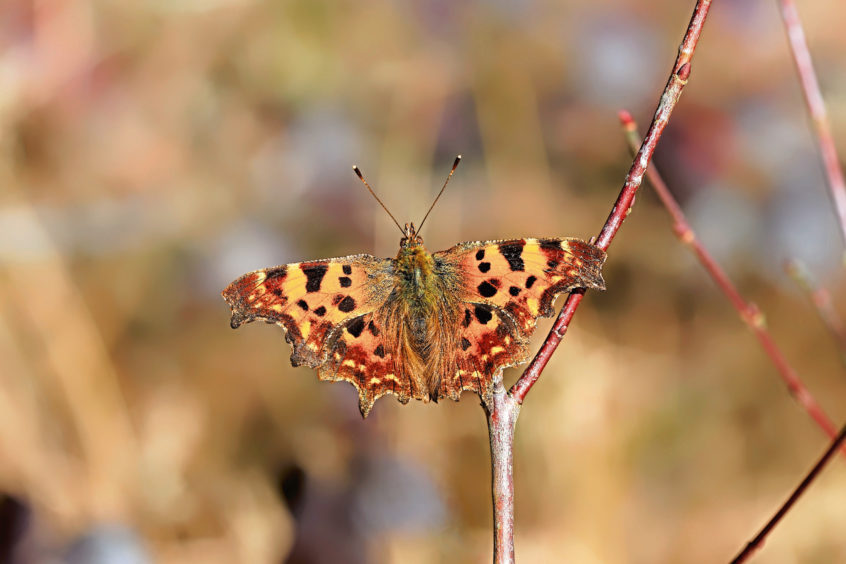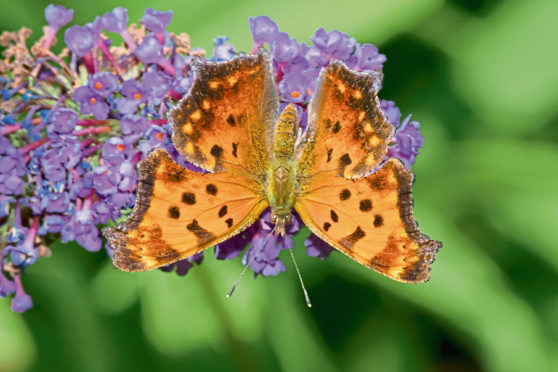There are over 30 different species of butterfly found in Scotland. Some species – such as the comma – are on the increase, whilst many others are declining in abundance due to habitat loss.
Like a piece of orange confetti blowing in the wind, a butterfly on fast-beating wings tumbles across the garden, then hovers and sways for a second above the lawn. Please land, I implore, for I’m sure it is a comma butterfly, but I need it to alight and stay still to be sure of my identification.

But no, with a renewed zest of life, the wings whirr back into life and the butterfly zips upwards and away over the neighbour’s hedge. Frustrating, but I’m sure it was a comma because the flight had power and purpose to its direction, which are not the hallmarks of the more common small tortoiseshell and peacock butterflies, which are also about at this time of year.
The next day, a comma does land on the lawn, and I creep as close as I dare, lest I should spook it and send it swirling back into the air. It is a most distinctive butterfly, featuring exquisite orange-patterned wings with scalloped edges. When the wings close, the darker undersides make the butterfly all but disappear as it takes on the appearance of a crinkled leaf.

Such camouflage is a clever adaptation, but the comma caterpillar goes to even further lengths by resembling a bird dropping. How on earth did such evolutionary genius happen? It is almost as if the lifecycle of this wondrous butterfly had been carefully designed by an architect.
I get excited about commas in the garden because they are recent arrivals to Scotland, having moved in from the south in recent years, probably as a result of our warming climate. As such, it is a species I am still unfamiliar with, and I enjoy getting to grips with their behaviour.
The commas now on the wing will have recently emerged from hibernation, and I find it incredible that such fragile creatures could have spent the winter slumbering through the frost and cold. Peacock and small tortoiseshell butterflies also hibernate, and after laying their eggs, the next generation will appear in the early summer.
Over the next few weeks, I will keep a special eye-out for the first orange-tip butterflies. The males have the most wonderful tangerine-edged wing-tips, whilst the wings of the females are whiteish, smudged with darker edges. When she closes her wings, the undersides are wonderfully inscribed with mottled green.

Cuckoo flower is the favoured food plant of their caterpillars, and I’ve kept a small damp corner of the garden unkempt, enabling this attractive plant to prosper in early May. When the sun shines and the air is warm, the male orange-tips will descend upon this patch of wildness where they patrol the edges in search of females.
Last year, I watched a male orange-tip home-in on a resting female with uncanny speed and accuracy. I imagine she must have released attractant pheromones to lure him in – just one of the many miracles of nature taking place on our doorsteps each day.











